In the previous week I had set my Geelong students the task of making an ikebana expressing their, "Memories of summer (holidays ?) ". Their interpretations were surprisingly varied, as were those of my Melbourne students that I posted two weeks ago. Tess and Helen thought back to childhood memories.
Tess grew up in Cornwall UK and had memories of walking on the Quantock hills of the Somerset Moors. Her ikebana, using materials available in her garden, invokes the memory of ferns, English Heather and Broom.
Helen spent her childhood in rural western Victoria. Her memories were of visiting her grandparents' property, where her grandfather kept a productive vegetable garden. When I saw the silverbeet leaves, my first impression was of tall poplar trees. Partially hidden in the vessel is a small Zucchini flower.
The theme of the workshop was the preparation and use of dried materials in ikebana. I used a, now rather old, dried unopened bud of Artichoke Cynara Cardunculus var. scolymus. It was given to me by my student Marcia. Also a dried Aspidistra A. elatior and some green, spent Agapanthus A. praecox flower heads. The Aspidistra leaves were curved before drying. The fresh green material brings the ikebana alive.
The ikebana vessel is by Tom Cockram who, at the time I bought the piece, had his studio in Daylesford Victoria.
Further photos from the Victorian Branch workshop.
25th February 2024

.jpeg)
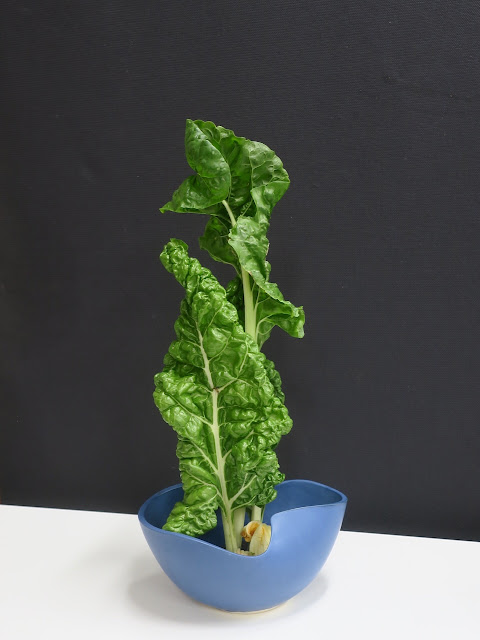





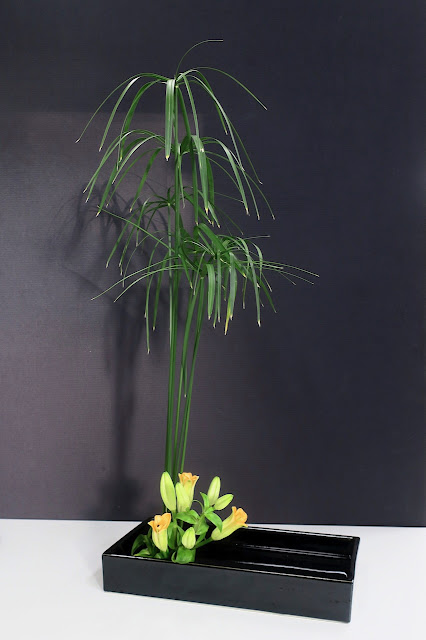




.jpeg)
.jpeg)
.jpeg)
.jpeg)

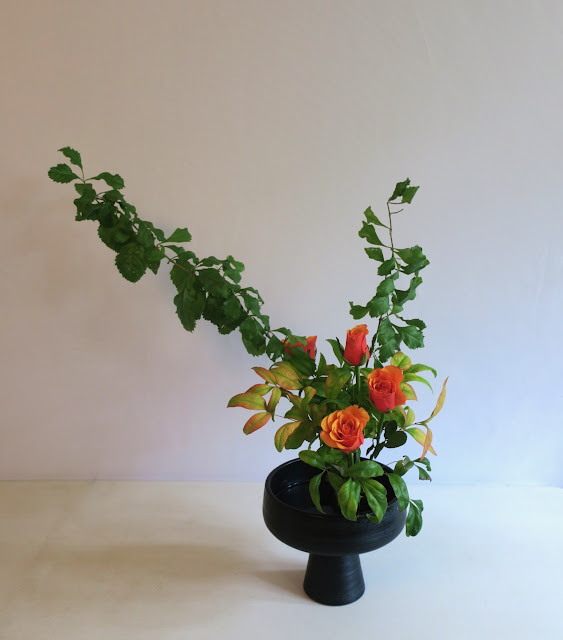
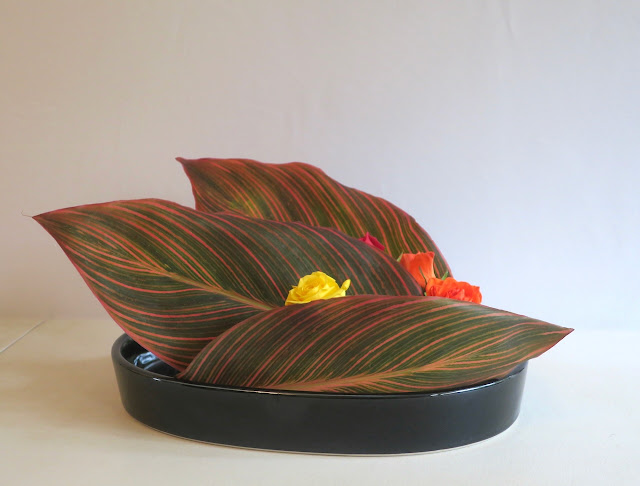

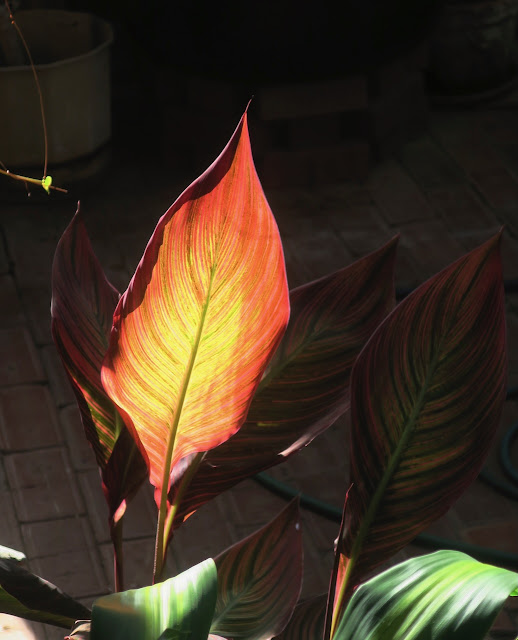

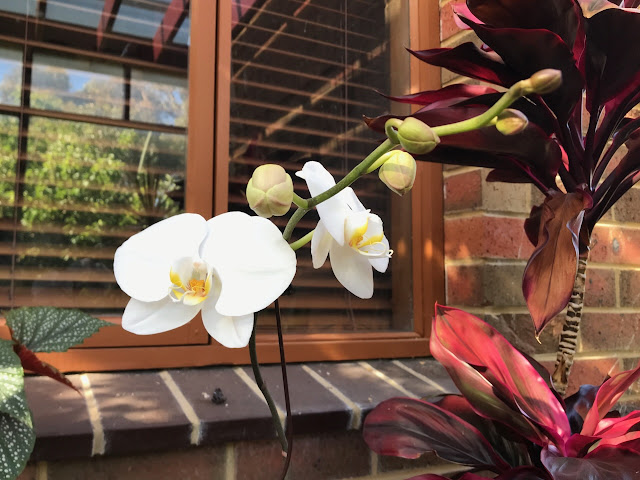



.jpeg)